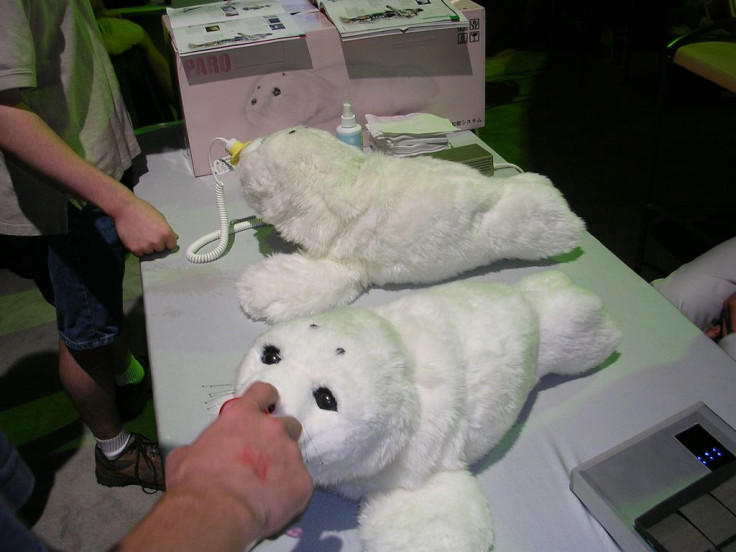Robot Pet Therapy Offers Same Pain And Anxiety Relief As Living Animals

For years, the medical community has mostly agreed that pets — particularly dogs, but other animals as well — can serve as useful aids in treating and managing health problems that have an emotional component, including anxiety, dementia, and depression. It wasn't until 2010, however, that robots entered the picture.
That was the year that Paro the baby seal arrived in America from its Japanese manufacturer. Paro, a robot modelled after a baby harp seal (with soft fur covering the electronics inside, of course), was introduced in clinical settings to help patients with dementia. When it the robot pet was found to be helpful in that setting, researchers began to experiment with other applications.
Now, a new study shows that robotic animals could provide patients with emotional or physical strains the same benefits as pet therapy using living animals.
Sandra Okita, assistant professor of technology and education at Columbia University, gathered 18 patients between the ages of 6 and 16 (along with their parents) to examine how robotic companions could reduce their feelings of pain and anxiety.
Okita discovered that when the child, parent, and Paro were together in therapy sessions, pain decreased considerably, while no changes were found while the parent was not included in sessions with child and the robot animal.
More in-depth analysis showed that the child's pain and negative emotions were alleviated after the parent's was reduced during therapy.
"It will be useful to explore in future studies whether the benefit of parental modeling exhibited during the interactions is maintained long-term," said Brenda Wiederhold, editor-in-chief of Cyberpsychology, Behavior, and Social Networking, from the Interactive Media Institute, in San Diego, Calif. "It will also be important to understand how we may lower pain and anxiety in children without the presence of their parents, which is of course not always feasible in a hospital setting."
Paro has been in use across Japan and Europe since 2003 and has been approved as a medical device for the United States mainly for pediatric hospitals, elderly patients, and schools for autistic children in therapeutic gatherings.
The idea for Paro arose for people who are allergic or don't have access to dogs and animals or to use as alternatives to drugs. The baby seal is specially operated using sensors and recognizes speech and behavior through touch.
The findings for this study were published in Cyberpsychology, Behavior, and Social Networking online.
Published by Medicaldaily.com



























